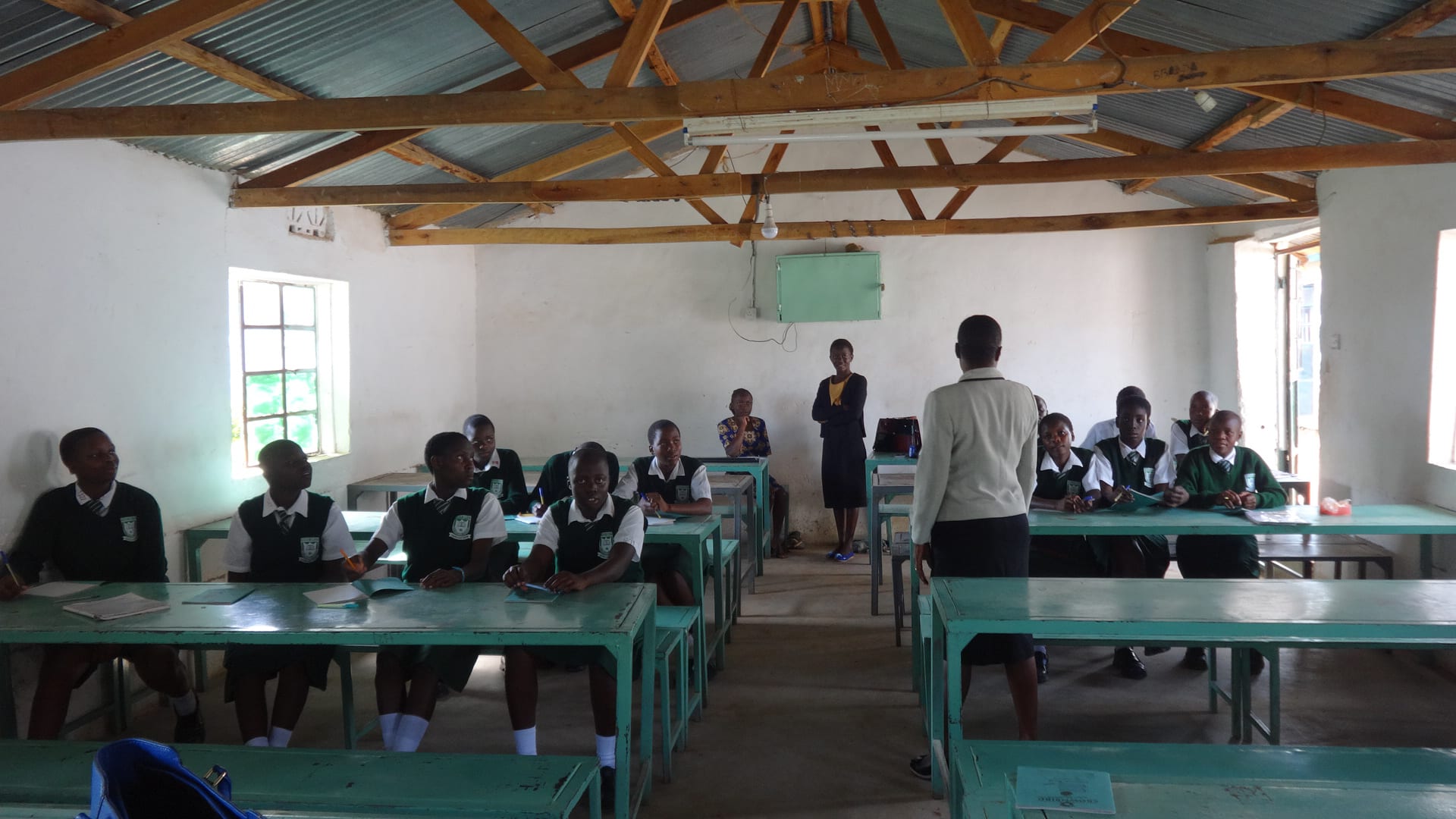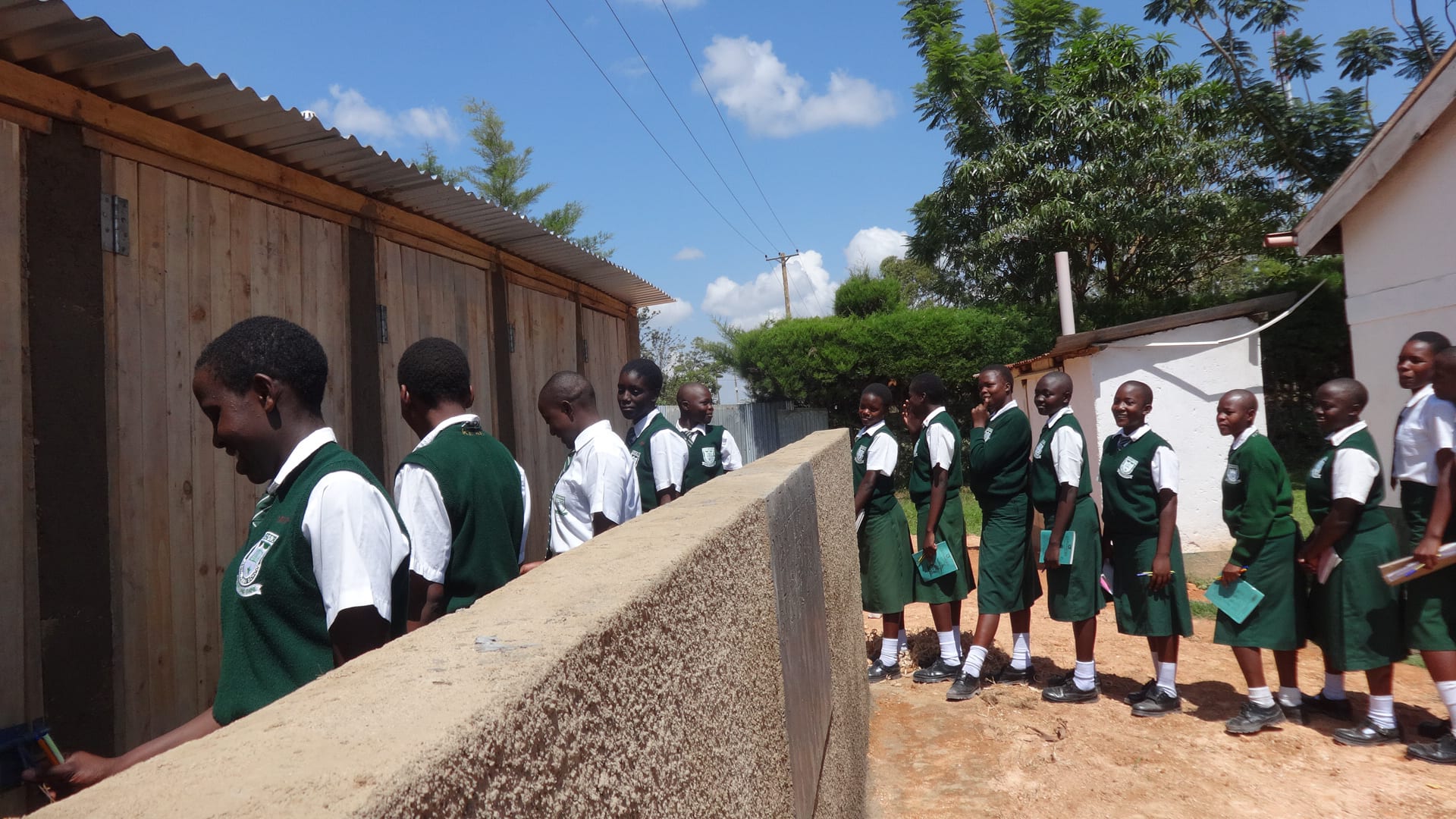This project is a part of our shared program with Western Water And Sanitation Forum (WEWASAFO). Our team is pleased to directly share the below report (edited for clarity, as needed).
Welcome to the School
Ibinzo Secondary is an all-girls school. It was established in the year 2000, sponsored by the Church of God, Ingotse Mission. It is located in Ibinzo Village, Kenya. The school started with a total of 15 students, and is just for boarders.
Now, the school has a total population of 425 girls! There are 21 teachers employed at Ibinzo Secondary School, as well as 13 support staff. The school also undertakes a number of agricultural enterprises such as horticulture, dairy farming and agro-forestry. These activities help the school generate income to sustain its operations.
The girls wake up at 4:30 AM every morning to bathe and then attend study hall at 5:30 AM. They clean dormitories and classes from 6:30 AM until breakfast at 7. Morning classes begin at 7:45 AM until lunch at 12:25 PM. Afternoon classes start at 1:30 PM and end at 3:25 PM when girls are required to participate in one hour of games (like gym class). After games, the pupils wash up and prepare for evening study hall. The students end their day at 9:30 PM. Class is Monday through Saturday at this boarding school, and on Sunday morning the pupils attend a religious service in the dining hall.
Water Situation
Ibinzo Secondary has two plastic tanks of 10,000 liters and 15,000 liters. This total capacity of 25,000 liters is not nearly enough for hundreds of boarding girls in their teenage years. Students have to wait long hours for their turn to fetch water from the tap on existing plastic tanks, which interferes with study time. Not to mention the fact that these tanks depend on rainwater; when full of rain, they can only last a few rationed days. Normally by the morning after rains, the water is consumed, leaving students with no water during the day.
In this case, girls are sent out to the local market to fetch water from a well there. This well also serves the girls during the drier months once the tanks are used up. When carrying water across this distance, there are several opportunities for contamination. Even if it was clean when pumped from the well, it is likely that after the dusty journey and storage at the school, the water is contaminated once consumed.
After drinking this water, girls complain of stomachaches and diarrhea. Cases of typhoid are even reported.
Sanitation Situation
The principal of the school, Mrs. Esther Abel said that "the toilets are almost full and something needs to be done urgently to safeguard the health of the girls. The water tanks are not sufficient for the entire student community, teachers and staff at the school. I welcome assistance."
The school has a total of 14 latrines out of which two are for teachers and visitors and the other 12 are for students. These latrines are not enough compared to student population, resulting in pupils wasting a lot of time in lines during break.
Due to the water shortage, a good number of these latrines aren't cleaned, and thus aren't used. Some of these latrines are almost full and pose a health hazard. The doors to some are even broken off.
There is only one hand-washing facility on school grounds, located outside of the classroom compound.
Plans: Hygiene and Sanitation Training and Hand-Washing Stations
Training will be held for two days. The facilitator will use PHAST (participatory hygiene and sanitation transformation), ABCD (asset-based community development), CTC (child to child), lectures, group discussions, and handouts to teach health topics and ways to promote good practices within the school. The CTC method will prepare students to lead other students into healthy habits, as well as kickstart a CTC club for the school. This CTC club will oversee the new facilities, such as hand-washing stations, and make sure they are kept clean and in working condition. The two hand-washing stations will be delivered to the school, and the club will fill them with water on a daily basis and make sure there is always a cleaning agent such as soap or ash.
Plans: Rainwater Catchment Tank
A 50,000-liter rainwater catchment tank will be constructed on school grounds. Teachers, students, and parents will gather the materials needed for this project, including sand, ballast, bricks, and hardcore. This contribution will fuel a sense of responsibility for the school and community to take care of their new facilities. Once materials are mobilized, the WEWASAFO team will arrive to lead the construction effort.
With adequate clean water, the school will have water for drinking, cooking, cleaning, and hand-washing.
Plans: VIP Latrines
Two triple-door latrines will be constructed, providing six new latrines. Latrine materials will be mobilized the same way as the tank, ensuring the school feels these facilities are truly theirs. And with a rainwater catchment tank nearby, there will be enough water to keep them clean.
School administration and parents are positive that with these new facilities and training, their students’ academic performance will improve. Students will be healthy and empowered to focus on what’s important!
When a 50,000-liter rainwater catchment tank, latrines, and hand-washing facilities are installed here, it is expected that students will have sufficient time to concentrate on their studies. Supplementing the available rainwater with this huge capacity should even take the girls through dry spells. And with enough clean water, the girls' academic performance will improve. Ultimately, the school will begin producing healthy and successful graduates!

 Rainwater Catchment
Rainwater Catchment
 Rehabilitation Project
Rehabilitation Project


































